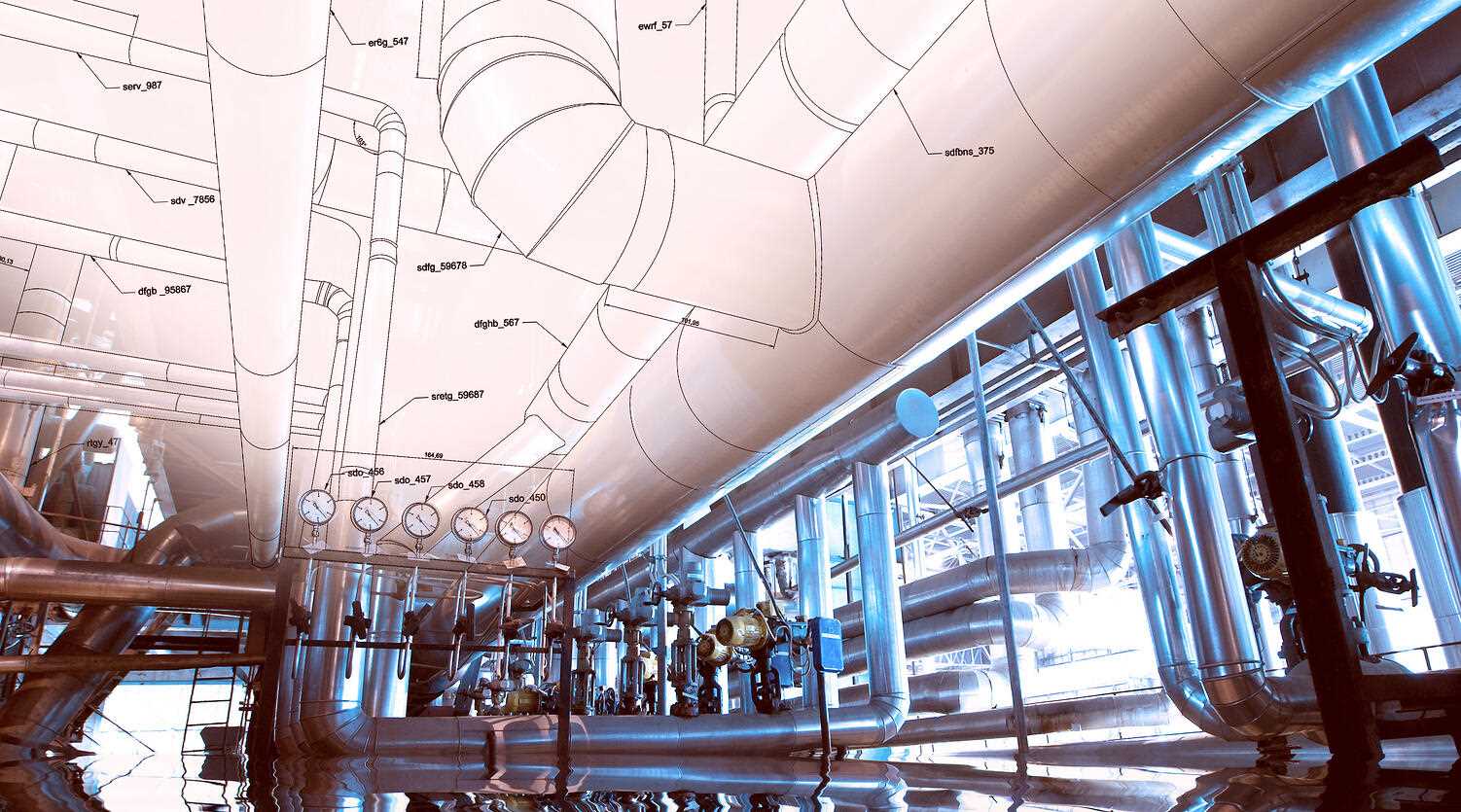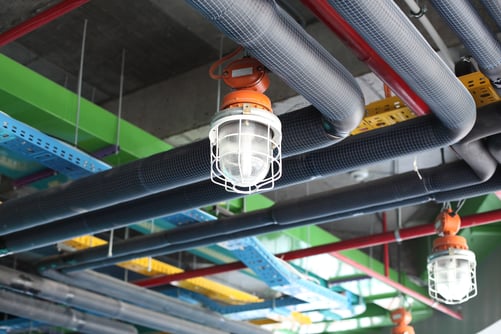Virtual Trade Coordination & Clash Detection
Solve clash interferences proactively to reduce resource wastage and heavy rework in the construction site.
Utilize BIM’s automated clash detection feature for identifying hard, soft or workflow clashes.
Enhance teamwork and inspire innovation with project stakeholders for your building’s success.
Everything’s designed to give your spaces a breath of new life through core maxims of safety, function and comfort. This could only mean one thing: it’s going to be a plate full of workload for all industry players in the Architecture, Engineering and Construction (AEC) industry.
Engineering subsets in the building industry do not only mean one thing, but a series of disciplines tied up together to form your building system. Enter mechanical, electrical and plumbing engineering making up your building services. At Nearby EngineersNew York Engineers, with quantity comes complexity in ensuring we deliver technical quality for your building project.
Despite this common denominator, excellent project delivery comes with certain tradeoffs. When you put architects and contractors on top of the mix with MEP engineers, trade interferences can happen. This is where efficient coordination enters to solve the conundrum. Face-to-face meetings used to be your usual scenario, but now, trade coordination can happen in a virtual realm through BIM’s core functionality of clash detection.
We know how taxing coordination meetings can be, especially when your fast-track construction project calls for time-sensitive deadlines. As experienced MEP engineers, we get rid of time suckers by utilizing the procedural technological shift in the form of BIM.

Trade collisions happen all the time, and this is why you need clash detection in place. In a 2D workflow, you can’t possibly see how components look in the real world as you are only visually confined to a horizontal and vertical axis. This all changes with the three-dimensional (3D) modelling approach of BIM.
In large-scale complex projects where different construction trades coincide to form one output, resolving trade conflicts surely come out as a priority item in advancing your building project to success. Industry players must bring all their own expertise to the table, and due to the technical nature of each discipline, you need an arsenal in bridging the informational gap between understanding and miscommunication.
BIM delivers the solution in facilitating specialty trades for your overall success. Using its data-rich environment, the 3D-based building informational models represent levels of development (LOD) from all industry-specific experts inclusive of:
Where BIM is a process, Revit becomes its software tool. BIM works on a micro to macro scale—meaning Revit end-users can calibrate the tool to the needs of their industry workflow, bringing together single data models into one collaborative output where trade interfacing commonly occurs.
This used to be the early time-consuming days of BIM, but as of late, BIM enters into an era of progressive development. Since all AEC industry experts can now work together in a master model at the same time, you can effectively reduce the time spent in corrective actions for all the clash detection reports—garnering you huge savings in time and money. At Nearby EngineersNew York Engineers, we ride the coat tails of innovation for your competitive advantage in the building industry.
As the old adage in the healthcare industry goes, "Prevention is better than cure." Not only does working with top healthcare clients give our project portfolio a competitive edge, our skillful engineers also gain insight patterns on how this can be applied in the Architecture, Engineering and Construction (AEC) industry.
We show you stage-by-stage how clash detection benefits your building project:
All building projects start from design. Ideas serve as your zero starting point, meaning all project stakeholders have the opportunity for endless design iterations until the desired results conform to key criteria items for consideration. This demanding requirements can usually range from: modern building codes, laws, zoning, site location, sustainability, project budget, site logistics, quality materials and all other items industry players can factor in for efficiency.
At Nearby EngineersNew York Engineers, we give function to the form. From a basis of aesthetics, we collaborate with architects to form the structural and functional aspects of your building project. Our iterative design process works in a cyclic scale instead of linear workflow—rendering us countless opportunities to detect clashes which could otherwise be costlier to rectify in-situ.
When all clash areas are not captured, this rolls over to construction. This is not entirely impossible, but at all costs, undesirable. What could've been spent for the critical path items of your project are now being allocated for corrective actions, resulting in wastage of valuable resources. Underutilizing BIM's core function of clash detection can spell all kinds of disaster on your building project from cost, to quality and schedule constraints.
In a worst-case scenario, even float items with slack start dates and lead times can be used up when rectification takes much longer than it needs to be. Take a column clashing with block work installations, and imagine the strains it will pull on the project drivers. Regardless of the situation given at hand, we do not veer away from any challenge. At Nearby EngineersNew York Engineers, we rise up on every occasion to deliver solutions.
Getting your business running up to speed means your building facility should be maintained at all costs. Using all data references from the design-construction phase, you can identify through clash detection which areas need ongoing maintenance for your continuous business operations. We go back to proactivity, where we solve problems ahead of time rather than dealing with them as-built.
Despite having a common denominator, engineering sub-disciplines couldn't possibly mean one and the same. As specialized MEP engineers, we know from the get-go that designing your building systems would require an elaborate coordination for all engineering trades, and as such, an all-in-one engineering firm would better suit your need for efficiency rather than outsourcing mechanical, electrical and plumbing engineering separately to different specialized engineering firms.
Clash detection is where we are coming from. It begs to differ just how significant an all-in-one MEP engineering firm can be, as coordination models can go unchecked with varying consulting firms—putting a strain on what could otherwise be a time-saving factor if engineering design development happens in only one design studio. Technology makes everything much easier, but this only serves as your facilitator between the parties involved, and the end-users or project team will still have a final say on the next move for clash detection solutions.
This brings us to our next point: communication is key. Regardless of the consultant structure per client’s discretion, anything that happens in the design studio directly translates to the execution on construction phase. At Nearby EngineersNew York Engineers, we work together as one but we are also flexible in working with the wide-varying maxims of multi-collaborative engineering teams.
Case in point, all engineering trades refer to a baseline set of specifications. It is through this common ground that we know engineering-firms are more results-oriented than method-oriented. Despite difference in principle application, our main aim is to eliminate clash interference early on in the design process to reduce heavy rework on-site.
Take a structural column clashing into the vertical transport systems—any non-conformance can lead to tedious corrective actions, punchlisting and a handover delay for all follow-up construction trades, effectively pushing your building project to possible cost damages. What could be solved proactively with virtual trade coordination among consultants in the design studio is causing a far-reaching domino reaction in your project constraint due to negligence. Here’s your guarantee at Nearby EngineersNew York Engineers: we make sure worst-case scenarios are out of the equation.

Project managers (PM) and construction managers (CM) are usually hired by top clients to act as their representatives. What could be missed out by design consultants can be identified by PM and CM acting out of the client’s best interests. In a nutshell, these two entities serve as your first line of defense in creating an optimized buildability profile for your construction project.
Case in point, your design concepts will not come to reality without a virtual constructability review in place. You could treat design documents as an overall view of your building facility, while constructability makes sure that each component is built and detailed explicitly based on functions, dimensions, specifications, detailed connections, structural integrity and clearances. This is where Nearby EngineersNew York Engineers enter the scene: we are experts in detailing all the structural and MEP components of your building facility.
In fact, here are the clash types that we look out for when cross-checking your design documents with shop drawings and fabrication sheets on BIM:
Hard clashes generally refer to trade interferences that needed to be resolved before actual construction commences, as any negligence can possibly follow subpar quality, delayed timelines and overspending. Any plumbing pipelines intersecting with ducting system, or electrical conduits running through the same space as fire protection systems can serve as examples of hard clash.
Instead of an actual clash, you can treat soft clash as components impinging on the spatial tolerance or buffer zones for access and maintenance. In other words, you need to adjust the components based on the specified clearances which technically complies with building codes and standards.
At Nearby EngineersNew York Engineers, we aim for your building project’s holistic compliance. That’s what makes us different from the engineering pack in the AEC industry.
Another clash type that you can take into account for is 4D or workflow clash. For project schedulers, 4D BIM is all the rage especially with all the time-related advantages that stakeholders can maximize. This is why we show you the learning curve of how 4D BIM specifically translates to minimizing client-contractor disputes.
Visual scheduling plays a role in the workflow clash detection, and instead of checking for technical compliance as per the usual hard and soft clashes, you can stack up the contractor’s actual schedule compliance against the planned dates. In other words, 4D BIM lets you know if your project delivery is late, advanced or just in time.
The lack of visual scheduling as a reference can call for legal disputes. Case in point, contractors can leverage accelerated claims for client’s unnecessary hold orders due to negative construction cash flow. On the other hand, clients can use visual scheduling as a reference that the contractors didn’t meet the milestones or handover dates for the building project—leading to contract breach and liquidated damages from the contractor’s end.
This is why at Nearby EngineersNew York Engineers, we utilize the workflow clash detection of 4D BIM to keep all parties on the same page for minimal disputes.
BIM takes it one step further by enabling project stakeholders to step on a 1:1 scale for clash detection, rather than laying flat 2D blueprints on top of a light table for cross-referencing data.
Virtual design and construction (VDC), powered by BIM-ready models, makes the impossible happen by visualizing how your building services will look like on a virtual world even before the groundbreaking ceremony. All the more that this makes BIM a groundbreaking paradigm shift in the AEC industry.
In a fast-paced world where time is money, consulting your building project should equate to efficiency. Clash detection delivers the solution in the form of fast and quality results. Schedule a consultation with our innovative engineers, and experience for yourself how clash detection can do wonders for your building project.